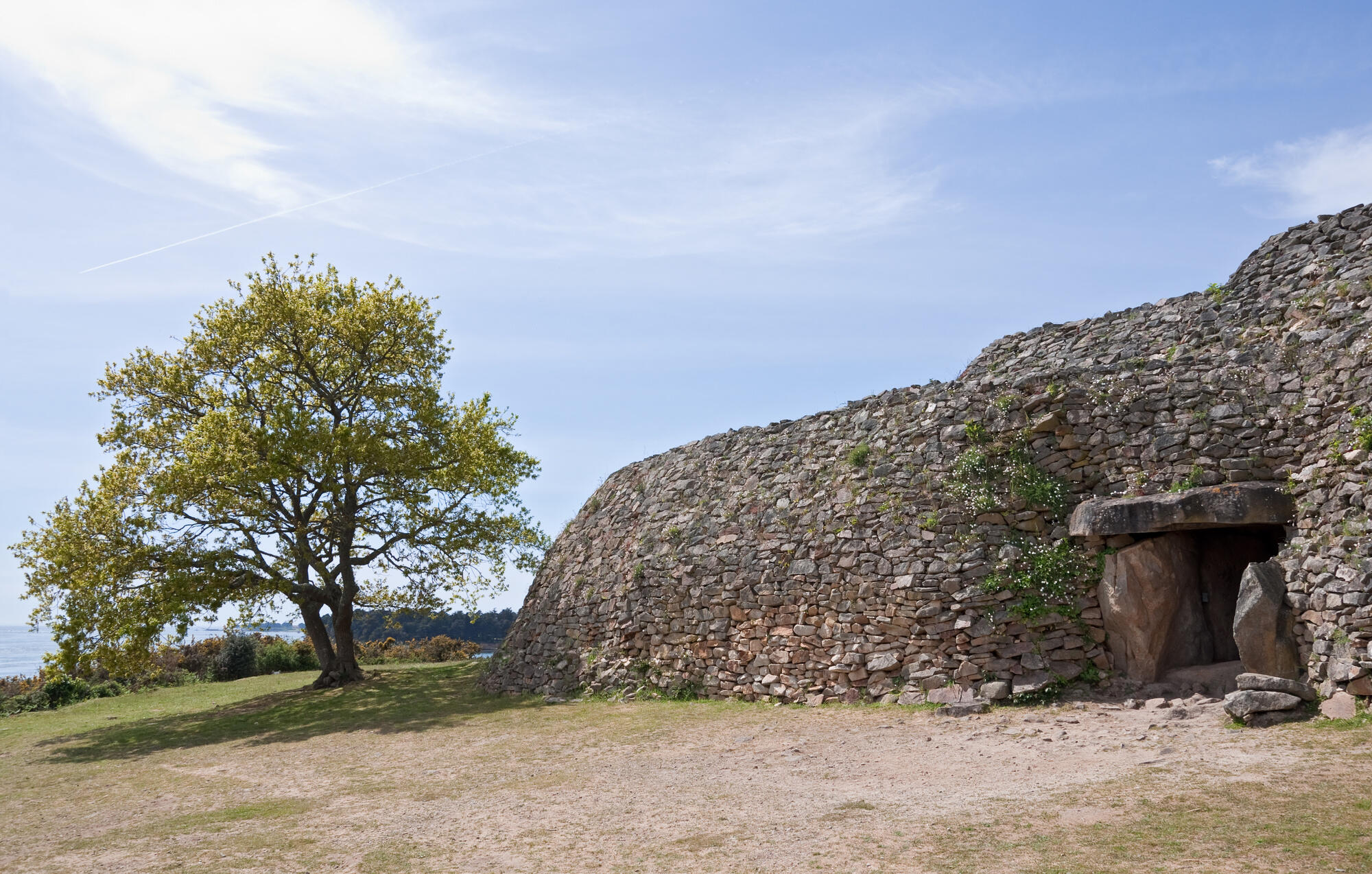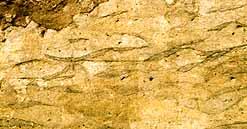- Home
- Discover the megaliths of Morbihan
- Monumentalism
- The art of the builders
- Materials
The use of "earth" as a building material
Monument at Dissignac (Loire-atlantique), showing a mixed structure with the gaps between the stone faces filled with soil.
At the heart of Er-Grah tumulus, black smears reveal traces of the vegetation still clinging to the clods of alluvial soil used as packing.
Loose surface stones
Most of the time, they mirror local geology. Their surfaces are often corroded and their edges blunt, showing that these were loose stones collected on the surface or on the foreshores.
Even when the stones have sharp edges, a sign of extraction, they still show signs of deep weathering, indicating that they were extracted from the surface.
The "quarries" discovered around monuments (at Locmariaquer, for example) are in fact small superficial excavations making the most of the natural fissure network; (however, the study of a polished stone axe factory in Plussulien showed that people in the Neolithic age were able to extract stones directly from an outcrop). A neolithic stag horn pick axe. The tool was used to break fissured rocks.
Most Neolithic walling consists of drystone structures (even those included in the Er-Grah barrow silty core at Locmariaquer, where loam could have been a very good binder).
They are usually not real walls but mere facings, the stability of which is secured both by varying degrees of batter and by small intermediary stones used as wedges.
Even in very early Breton megalithic structures, the corbelled arch technique was sometimes used in roofing, revealing remarkable know-how for the time.
One of Guennoc island (Finistère) passage tombs. A 2m high section of chamber wall stonework remains standing.
A neolithic stag horn pick axe. The tool was used to break fissured rocks.
Large monoliths
These monoliths raise the largest number of questions. In most cases, the rock is local, but some were undoubtedly moved over distances of up to ten kilometres.
In the Morbihan department, the most remarkable examples are located in the Locmariaquer peninsula. They include a dozen orthogneiss blocks, among which the Grand-Menhir ", weighing around 270 tons, and the Eocene quartzite Table-des-Marchands chevet jambstone. These stones appear to be about ten kilometres from their potential source deposits.
Most of the monoliths seem to be blocks naturally extracted by erosion. However, on the most angular side, the edge of a fissure is often visible. This was where the block was separated from the bedrock, probably by inserting wooden wedge and levers. These features are particularly visible on Carnac alignment menhirs.
The Grand-Menhir at Locmariaquer is a huge 20-meter long, 270-tonne orthogneiss block which must have been moved over a distance of at least ten kilometers.
Geological map of the Morbihan Gulf and surrounding areas, showing possible sources for the supply of the sandstone and orthogneiss blocks used for the Locmariaquer megaliths.






